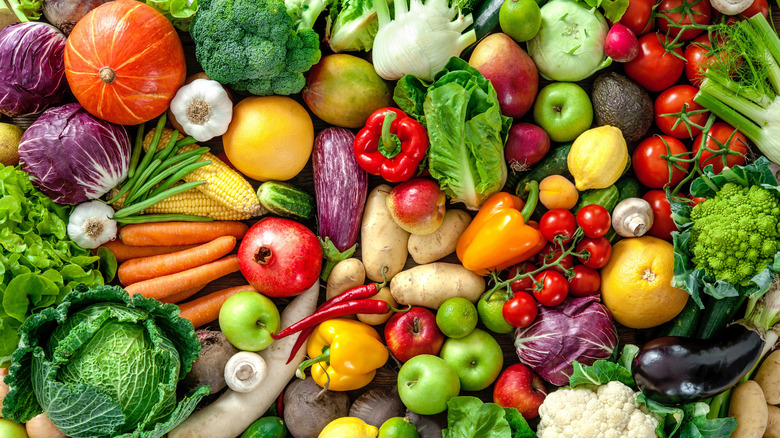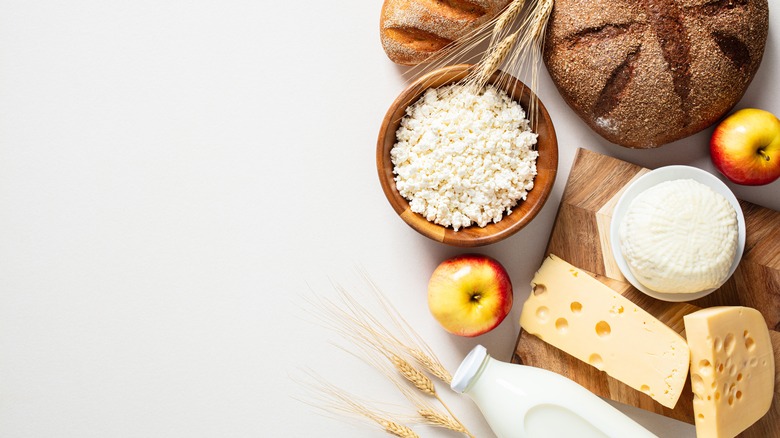How The American Diet Has Changed Over Time
Just as fashion, technology, and even Americans' manner of speaking have changed over time, so too has the United States' national diet. While this isn't to say that certain elements of "American food" haven't been around for more than a few decades (hamburgers, a beloved staple of American barbeques and fast food lunches, were a part of the U.S. diet as far back as 1921 and even a bit earlier than that, as History reports), American cuisine has fluctuated wildly from the beginning of the 20th century. This can be chalked up to a wide assortment of reasons: changes in technology, cultural influences, and economic shifts.
In the early 20th century, for example, Americans were introduced to the concept of refrigeration alongside "modern" appliances (via Oxford Research), allowing frozen foods to be acquired and prepared much more easily. Canning reached an industrial scale, as well. The 1930s, marred by the Great Depression, left behind the legacy of nutrition-focused eating and government intervention when it came to what sort of foods Americans should be eating (via The Atlantic). Indeed, every decade was both similar and wildly different in how and what Americans ate. As we get closer to the 2000s, we see begin to see how the diet most Americans enjoy today started to form.
But what exactly have the rise of canned food, fast food, and processed food led us to? What exactly is today's American diet, and how does it differ from what was on America's plate decades past?
Americans enjoy a lot of grains and fat
According to the Pew Research Center, the American diet as of 2010 seemed to focus mainly on grains, fats, and oils. When compared to 1970, Americans were consuming around triple the amount of cooking oils by 2010. The consumption of fruits and nuts appeared to be a bit higher in 2010 compared to 1970, while eggs, vegetables, dairy, and red meat remained similar. Further research also revealed that Americans were consuming more corn-based products and sweeteners, alongside poultry, cheese, and rice.
Is this diet something to be worried about? The CDC does note that obesity in adult Americans was 41.9% from 2017 to 2020, but the fact that chicken is now the most-consumed meat in the U.S. rather than beef (via Pew Research) may have some benefits. Poultry has less saturated fat than beef or red meat (via the American Heart Organization) and is usually leaner than a fatty brisket or prime rib. Following the COVID-19 pandemic, a study published in the journal Patterns noted that Americans seem to be focusing more on eating healthier, though those who lived in places with access to a variety of grocery stores fared better than those who lived near liquor stores.
While our modern-day diet may lean more towards fats and grains, Americans still put away an impressive amount of food of all varieties in a year.

